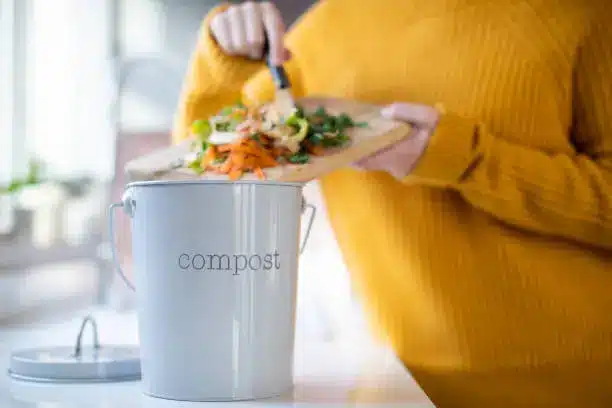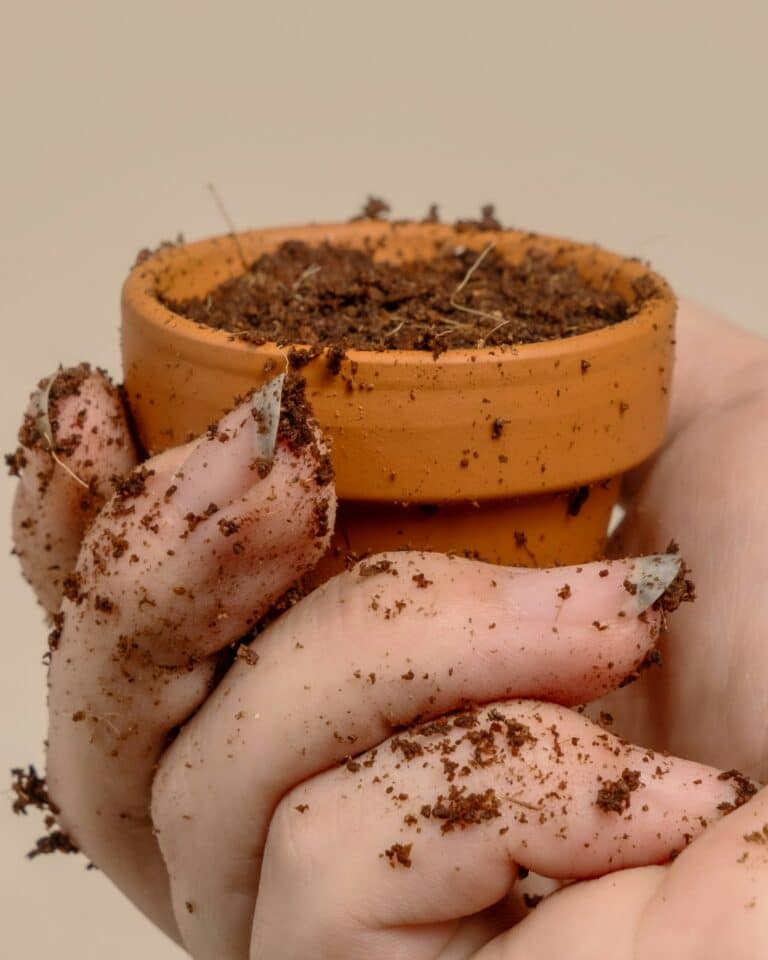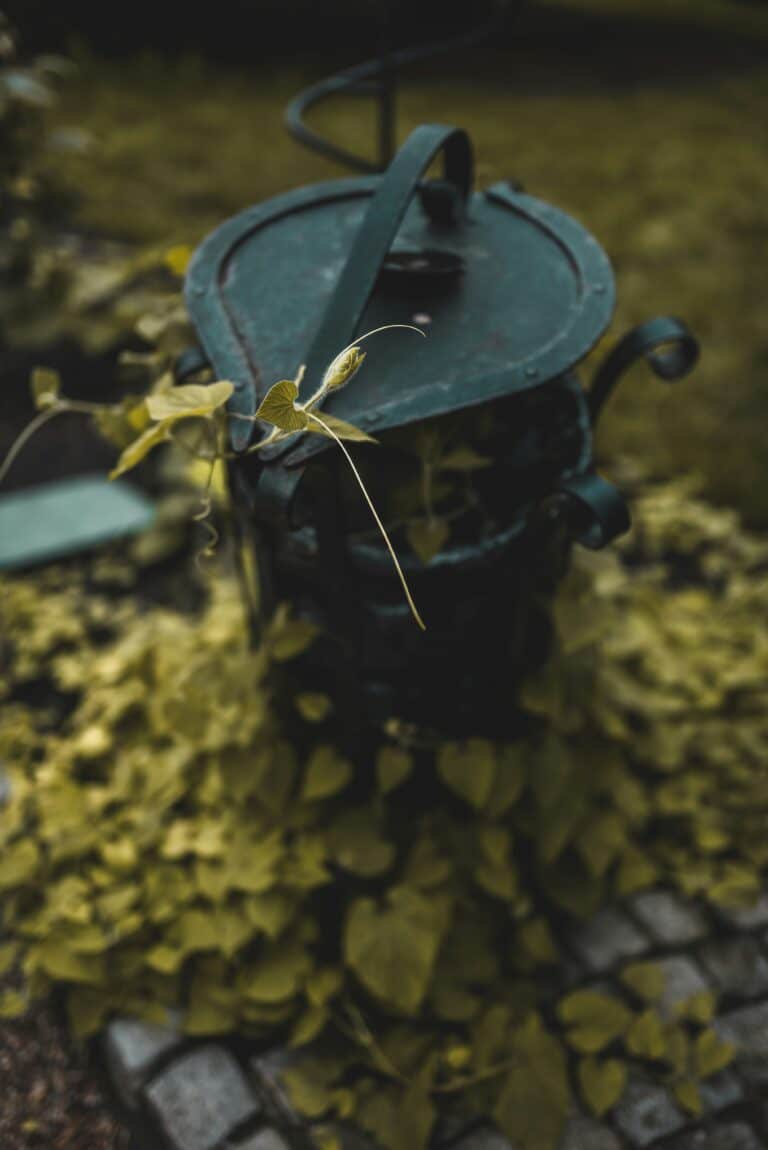No, I’m not talking about tossing your vegetable peels into the trash, but rather composting them—indoors. Yes, you read that right: Indoor composting. 🌱

While the concept may seem a bit alien or perhaps a little messy to some, it’s an eco-friendly practice that has seen an increase in popularity among urban dwellers and those without access to an outdoor compost bin. It’s a practical, straightforward way to reduce waste and contribute to the health of your indoor plants. Plus, it’s a step towards a more sustainable lifestyle.
In today’s post, we’ll demystify the world of indoor composting, showing you how to set up your indoor compost bin in five easy steps. But first, let’s dive into the ‘whys’ behind this green initiative.
Why Compost Indoors?
First things first, let’s tackle the big question: Why should you compost indoors? The answer is straightforward: Composting is one of the most effective ways to reduce the amount of waste you produce. In fact, according to the U.S. Environmental Protection Agency, composting can help divert as much as 30% of household waste away from the trash. Moreover, composting indoors is ideal for those who live in apartments or homes without yards.🏢
Understanding the Basics of Composting
Before we jump into the ‘how’, it’s important to grasp the basics of composting. In essence, composting is a process that breaks down organic material (like fruit and vegetable scraps) into a nutrient-rich soil conditioner. This ‘black gold’ is perfect for improving the health and productivity of your houseplants or indoor herb garden.🌿
Now that we have covered the ‘why’ and the ‘what’ let’s get our hands dirty (literally) and dive into the ‘how’. We’ll take you through the process of setting up your own indoor compost bin, step by step. But don’t worry, it’s easier than you might think!👍
The 5 Steps to Set Up Your Indoor Compost Bin
The process of setting up your indoor compost bin can be broken down into five simple steps. We will guide you through each step, providing practical tips and advice along the way. Whether you’re a green-thumb guru or an eco-novice, by the end of this post, you’ll have everything you need to start composting indoors.
From selecting the right compost bin and learning what you can (and can’t) compost, to understanding how to maintain your compost and use it to boost your plants, we’ve got you covered. So, without further ado, let’s get started on your journey towards a cleaner, greener home. 🌍
🌱 Step 1: Understanding Indoor Composting
Indoor composting is a simple, eco-friendly way to minimize household waste and create nutrient-rich soil for your indoor plants or garden. It’s not as complex as it sounds, but understanding the process is crucial to successfully setting up your compost bin.
Composting is essentially a method of recycling organic material. The composting process breaks down organic waste into humus, a nutrient-dense material that improves soil health. It’s a natural process that occurs everywhere in nature, but when done consciously in our homes, it can have significant environmental benefits, reducing the amount of waste sent to landfills and contributing to a healthier, greener planet.
Before you start, it’s important to know what can be composted and what can’t. Organic material like fruit and vegetable scraps, coffee grounds, eggshells, and grass clippings are great for composting. On the other hand, avoid using meat, dairy products, or diseased plants, as these can attract pests or create a bad odor. Watch this informative video from the YouTube channel “Compost Guide” titled “What Can and Can’t Be Composted” for a comprehensive list of compostable materials.
📊 Comparing Indoor and Outdoor Composting
| Aspect | Indoor Composting | Outdoor Composting |
| Space | Requires little space; can be done even in small apartments. | Requires a larger area; ideal for backyards or gardens. |
| Convenience | Can be done all year round, regardless of weather. | Composting process can be affected by seasonal changes and weather conditions. |
| Odor | With proper maintenance, doesn’t produce a foul smell. | May occasionally produce a strong odor. |
As you can see, indoor composting can be a practical solution for those living in apartments or areas with limited outdoor space. Check the comparison table above for a clearer picture of the advantages of each composting method.
🏡 Step 2: Choosing the Right Compost Bin
The first step in setting up your indoor compost bin is choosing the right container. There are a variety of bins available on the market, each with its own set of features. Some have built-in aerators or filters, while others are simple, no-frills containers. Consider factors such as size, material, and design when choosing your bin.
If you’re starting small, a simple 5-gallon bucket with a lid can work. For larger households producing more organic waste, there are specially designed compost bins available that can handle larger volumes. For a detailed guide on choosing a compost bin, watch this YouTube video from the channel “Green Renaissance” titled “Choosing the Right Compost Bin”.
Alternatively, you can DIY your own compost bin. All you need is a container with a lid and the willingness to drill some holes for ventilation. This can be a cost-effective and rewarding project, especially for those who enjoy DIY activities.
🔨 Step 3: Setting Up Your Indoor Compost Bin
Once you’ve chosen your compost bin, it’s time to set it up. This is where the fun begins! Start by placing your bin in a convenient location. This could be under the kitchen sink, in a utility room, or even on a balcony. The key is to make it easily accessible so you’ll remember to add to it regularly.
Next, prepare your compost layers. Start with a layer of brown materials, such as shredded newspaper or dried leaves, to help aerate the pile and provide carbon. Then add a layer of green materials, like vegetable scraps or coffee grounds, which provide nitrogen. Alternate layers of brown and green materials, ensuring that the top layer is always brown to help control odors and flies. For a visual guide on setting up your compost bin, watch the video titled “How to Set Up an Indoor Compost Bin” from the YouTube channel “One Yard Revolution”.
Remember to turn your compost pile every week or so to keep it well-aerated and speed up the decomposition process. This can be done using a small shovel or compost aerator.
🌿 Step 4: Maintaining Your Indoor Compost Bin
Maintaining your indoor compost bin is critical to ensure it functions properly and doesn’t produce a foul odor. Regularly turning your compost, managing moisture levels, and maintaining the right balance of green and brown materials are all key aspects of compost bin maintenance.
If your compost pile is too wet, it can produce a bad smell and slow down the composting process. To avoid this, make sure to add enough brown materials to absorb excess moisture. Conversely, if the pile is too dry, decomposition may slow down. In this case, adding a bit of water or more green materials can help.
A properly maintained compost bin shouldn’t smell bad. If it does, it’s a sign that something is off. Troubleshooting common composting problems is an essential skill for any indoor composter. Check out the YouTube video “How to Maintain Your Indoor Compost Bin” from the channel “Living Web Farms” for a thorough guide on compost bin maintenance.
🌎 Step 5: Using Your Compost
After a few weeks or months, depending on your composting conditions, your organic waste should be transformed into rich, dark compost. This compost, or “black gold,” is packed full of nutrients and is perfect for enriching the soil of your indoor or outdoor plants.
To use your compost, simply mix it into the top layer of your plant’s soil. It will help improve the soil structure, increase its ability to hold water and nutrients, and promote healthy plant growth. Using compost can also reduce the need for synthetic fertilizers, making your gardening efforts even more eco-friendly.
Keep in mind that composting is a cyclical process. Once you start using your compost, keep adding to your compost pile and maintain it properly to ensure a continuous supply of homemade compost. Take a look at the YouTube video “How to Use Compost at Home” from the channel “Urban Gardening” for tips and techniques on using compost effectively.
Conclusion
In conclusion, this article has covered a significant amount of ground, offering an in-depth exploration of the technical world of IT and engineering. From the basics of software development, to the complex intricacies of modern information systems, we have journeyed through the fascinating landscape of these essential fields. The importance of having a solid understanding of these areas in today’s increasingly digital world cannot be overstated. Indeed, proficiency in these domains can significantly enhance one’s professional capabilities, and the ability to communicate about them in a clear and comprehensible manner is invaluable.
Throughout our discussion, we have delved into several fundamental concepts, each one building upon the last, thereby offering a comprehensive picture of the subject matter. We have looked at the role of software engineering in the development of robust and efficient systems, the importance of good project management, and the impact of new technologies and trends on the IT and engineering fields.
This has been quite a journey and, like any journey, it has had its fair share of challenges. However, with every challenge comes the opportunity to learn and grow. It is my hope that this exploration of these subjects has provided you with a greater understanding, and perhaps even sparked a curiosity to delve even deeper into these fascinating areas of study.
As we wrap up this discussion, I would like to leave you with a few final thoughts. First, the importance of continual learning cannot be overstated, especially in fields as dynamic and rapidly evolving as IT and engineering. As such, I encourage you to continue to seek out knowledge, to ask questions, and to never stop learning.
Second, the importance of communication, particularly the ability to explain complex concepts in a way that is understandable to a non-technical audience, is crucial. This is where the skill of technical writing comes in, and I hope that this article has given you a glimpse into the potential of this skill.
Lastly, I would like to invite you to engage in a conversation about these topics. Share your thoughts, ask questions, or even challenge some of the ideas presented here. After all, it is through dialogue that we learn and grow.
As you continue on your journey, remember to never stop exploring, to stay curious, and to keep pushing the boundaries of what is possible. As Albert Einstein once said, “The important thing is not to stop questioning. Curiosity has its own reason for existing.”
I look forward to hearing from you. Feel free to reach out to me on LinkedIn or via email. Also, I highly encourage you to share this article with your networks and communities. Knowledge is, after all, most valuable when it is shared.
I hope that this article has been informative and enlightening for you. For further reading, you might consider some of the resources listed below:
1. IEEE Xplore
2. ScienceDirect
3. ACM Digital Library
Thank you for reading. Until next time, happy learning! 😊
References:
1. IEEE Xplore. (2010). Software Engineering.
2. ScienceDirect. (2019). Modern Information Systems.
3. ACM Digital Library. (2000). The Role of Software Engineering in Information Technology.



